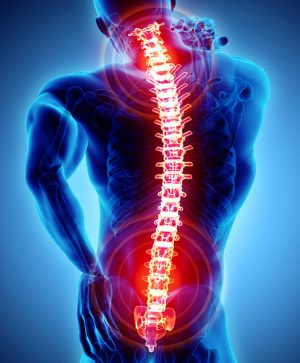Pain Management Center: Spinal Cord Stimulators and Cervical Radio Frequency

Bodily pain presents itself to people in many different forms and levels of discomfort, and stems from a variety of factors including accidents, illness, lack of exercise, improper lifting and more. For those suffering from acute and sub-acute pain, there are various forms of treatment readily available like physical therapy, remaining active during the day or visiting a chiropractor, but for those suffering from chronic pain, the solution is not always as easily attained. Two potential solutions to resolving chronic pain include treatment with a spinal cord stimulator or treatment with cervical radio frequency.
Spinal cord stimulators are used for patients experiencing neuropathic pain, or a radiating pain stemming from one’s neck down to their hands, and are implantable devices that are placed in the lumber or cervical areas of one’s spine that stimulate nerve fibers to cover up pain. A spinal cord stimulator is traditionally offered to patients who have leg pain and back pain after undergoing spinal surgery, patients that have back and leg pain who have been deemed not to be operative candidates and who have failed conservative measures like physical therapy or chiropractic work, and for patients who suffer from neuropathic pain.
Cervical Radio Frequency is used for patients who are experiencing non-neuropathic pain, or a radiating pain from one’s neck to their shoulder or scapular area, and is administered through a process involving electrical current and radio waves to relieve pain. Cervical radio frequency is traditionally offered to patients who still have radiating neck pain following conservative measures like physical therapy, oral medicines and injections. In general, spinal cord stimulators are used to treat pain that radiates into one’s arms, hands and legs, and cervical radio frequency is used to treat axial, or neck, back and scapular pain.
Aside from offering pain relief, spinal cord stimulators and cervical radio frequency both have the ability to offer patients improvement in their daily activities and a reduction in patients’ reliance upon oral pain medications, and the treatments can serve as an option for patients who would otherwise be exempt from surgery for medical reasons.
A few measures that can be taken to reduce bodily pain are performing core exercises that strengthen one’s back, practicing proper lifting techniques like bending at the knee and keeping objects in close proximity, and remaining active during the day. Patients experiencing chronic pain may be candidates for a spinal cord stimulator or for a cervical radio frequency procedure, however, it is advised that patients try other conservative measures first like physical therapy, chiropractic manipulation, acupuncture, massage or oral medications.
If you would like to discuss pain management and alleviation options further, please make an appointment with your primary physician to request a referral to the Saint Francis Pain Management Center at 573-331-5329.
